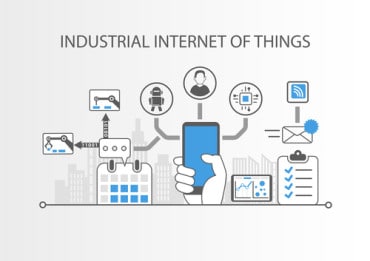
How one publisher competed in a real-time media environment by tracking data from social media as well as the online behavior of readers.
Name of Organization: BostInno/Streetwise Media
Industry: Media & Entertainment
Location: Boston, MA USA
Business Opportunity or Challenge Encountered:
The transition from print to online digital delivery has destroyed many traditional news organizations, resulting in significant losses of advertising and subscription revenue. The challenge for traditional media is to transition to a real-time media model in a profitable and sustainable way.
But not all newsrooms are emptying out. Some are thriving. BostInno, produced by Streetwise Media, represents such a new breed of news organization. The online information provider—designed for a regional audience in the Boston metropolitan area—competes for readers with general-purpose social media platforms, as well as existing traditional media outlets.
Disruptive technologies such as social media and web-based news sites actually “present positive opportunities to traditional news organizations,” write Greg Gomer, senior vice president of BostInno, and Kyle Gibson, web analyst with BostInno. Their analysis of digital media transformation was published as part of a new compilation, “Contemporary Research Methods and Data Analytics in the News Industry,” co-edited and co-authored by Dr. William Gibbs and Joe McKendrick (also analyst and editor for RTInsights.com). The social media model—built on networked communities of people—provides a means to disseminate content as well as enable instant feedback from readers, they observe.
How This Business Opportunity or Challenge Was Met
To build a vibrant community of readers, as well as succeed as a media organization in a digital world, BostInno employs real-time analytics on data as it flows in from a range of sources. The goal is to use the data to interact and engage with readers. “Every action a user makes online, from visiting a page to commenting on a video, is recorded as it occurs and immediately ready to be analyzed,” Gomer and Gibson write.
The most relevant data for real-time analytics in media organizations is their websites, which contain articles, interviews, videos, and images, as well as search engines and social media. Such capabilities provide publishers and editors a window into issues—both on their sites and in their news coverage areas—that enable almost instantaneous reactions, Gomer and Gibson state. “It is the equivalent of a newspaper editor being able to watch over thousands of readers’ shoulders while they read their morning paper.” Also, the type of data being tracked is important. The authors recommend tracking variables such as number of users, number of page views, referrals, visit duration, path analysis, visitor demographics, and type of browser.
Popular tools for tracking trends include Google Analytics, a suite of data tracking and visualization tools that enabls media decision makers to analyze large sets of data mined from their site, as well as Chartbeat, which measures and monetizes digital attention for publishers, brands, and agencies. “We are constantly monitoring what search engine terms have brought users to our website, as well as what search engine terms are currently popular,” Gomer and Gibson state.
Measurable/Quantifiable and “Soft” Benefits from This Initiative:
The ability to track audiences in real time has been instrumental in helping BostInno stay on top of news at it happens, as well as stay ahead of its media competitors. For instance, Gomer and Gibson write, during the 2014 World Cup, the organization’s editors were able to “look at past search traffic from the last World Cup in 2010 as well as real-time search traffic concerning the 2014 World Cup. It would have been much more difficult to react to unexpectedly important matches without being able to see search traffic in real-time. Using all of this data, BostInno was able to prioritize the content that consumers wanted the most.”
In another example, the immediate aftermath of the tragic Boston Marathon bombings in 2013, “the best reporters on the street that day were the innocent bystanders on Boylston Street tweeting out photos and first hand reports on what happened,” the authors relate. “At BostInno, we successfully curated the news of the day through Twitter. News organizations from all over the world, were citing and reporting on the Twitter profiles of regular citizens that day.”
For media organizations, “it is very important to capture the data in real time, but it is also very important to act on that data in real time,” the authors stress.
Source: “Web 2.0 and News 2.0: Utilizing Real-Time Analytics for Modern News Organizations,” from “Contemporary Research Methods and Data Analytics in the News Industry.”
Want more? Check out our most-read content:
Are We Good Enough at IoT Security?
Making Every Moment Count for Customers
Frontiers in Artificial Intelligence for the IoT: White Paper
Liked this article? Share it with your colleagues using the links below!






























